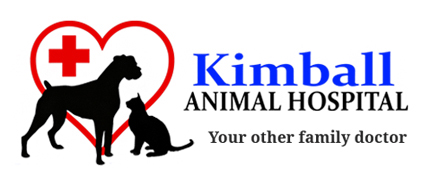Library
-
Most cats settle into a new home fairly easily. They crave familiarity, so it is best to bring along many familiar objects, such as litter boxes and favored furniture. Cats must be initially secured to prevent their escape, as they may attempt to return to a prior home and could be lost or injured along the way. It is best to introduce your cat to your new home gradually and with supervision.
-
Most dogs seem to take moving in stride, if they are with are with their familiar social group. Try to anticipate changes in the dog’s routine and introduce the changes prior to the move. Familiarize your dog with any novel noises that might be associated with the new home. If there will be new pets or people in the new home, arrange introductions ahead of time in a neutral location. When you arrive at your new home, give your dog plenty of time to adjust before trying to leave him alone.
-
Many herding breeds (most commonly Collies and Australian Shepherds) have a mutation at the MDR1 gene that makes them more sensitive to the negative effects of certain medications. These drugs include several antiparasitic agents (when given at high doses), the antidiarrheal agent loperamide (Imodium®), and several anticancer drugs. The effects of the mutation vary in severity, depending on whether the dog carries one or two copies of the mutation. There is a cheek swab or a commercially-available test that assesses blood samples for the presence of the MDR1 mutation.
-
True to his heritage and looks, the Neapolitan Mastiff can be a tough character. He's suspicious of strangers, aloof with acquaintances, but fiercely loyal to family. He's generally laid-back at home, and he doesn't bark a lot. Of course, when he does, you'll hear it.
-
Neutering and castration are the common terms used to describe the surgical procedure during which both testicles are removed to sterilize a male cat. Neutering is recommended to prevent urine marking and other territorial behavior, such as roaming and fighting with other cats, which increases the risk of contracting disease. Spaying and neutering our pets is a vital step in reducing overpopulation and crowding of shelters.
-
Neutering and castration are the common terms used to describe the surgical procedure during which both testicles are removed to sterilize a male dog. The consensus at this time is that neutering will increase the lifespan of a dog. It is also a vital step in reducing the overpopulation of dogs and the crowding of shelters. This operation requires general anesthesia and complications are rare. A rest period of 5–10 days is needed for recovery after surgery.
-
Neutering is a surgical procedure in which a male animal’s testicles are removed to sterilize them (make them infertile). There are many health and behavioral benefits associated with neutering your rabbit. This handout explains the neuter procedure and post-operative care at home.
-
All pets, including rodents, sugar gliders, and hedgehogs, need an initial examination by a veterinarian and at least an annual check-up to allow for early detection and treatment of potentially life-threatening diseases. During this visit, your veterinarian will perform a physical examination and various diagnostic tests to determine your pet's state of health and to see if your pet might be harboring any diseases that require treatment.
-
Newfoundlands are easygoing, face-washing people lovers and a great choice for the first-time dog owner who is not afraid of a little drool, a big dog, and a lot of hair.
-
I will fight him with both paws tied behind my back, I will! Yep, that is a Norfolk all right. Sometimes called a demon in the field, the Norfolk is a terrier through and through, with a feisty, scrappy spirit and plenty of energy for the next great adventure. She may be tiny, but buckle your seatbelts - you are in for a terrier of a good time.

